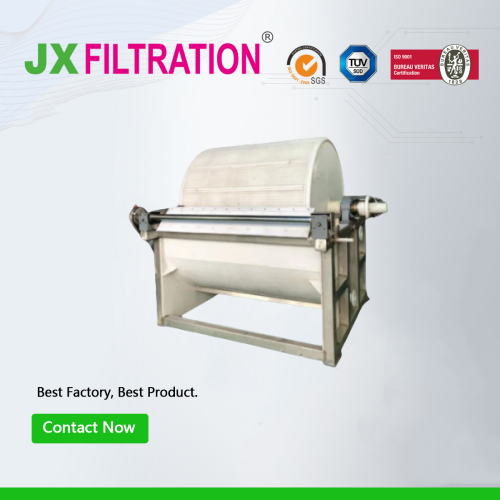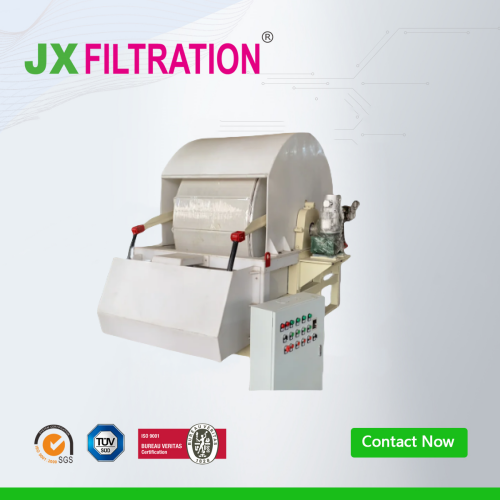What Is Vacuum Drum Filter?
A vacuum drum filter is an industrial filtration device designed for continuous solid-liquid separation. The system features a large, rotating drum that is partially submerged in a slurry, which is a mixture of solids and liquids. The drum's surface is covered with a filter medium, such as a cloth or mesh, and is connected to a vacuum system inside the drum.

Here’s how it works in more detail:
-
Rotating Drum: The drum slowly rotates within the slurry, typically at a low speed to allow sufficient time for filtration.
-
Vacuum Application: As the drum rotates, a vacuum is applied inside the drum, creating a pressure differential across the filter medium. This vacuum draws the liquid component of the slurry (filtrate) through the filter medium, leaving the solid particles (filter cake) on the drum's surface.
-
Filtration Zones:
- Submersion Zone: This is where the drum is submerged in the slurry, and filtration begins as the vacuum pulls the liquid through the filter medium.
- Drying Zone: As the drum continues to rotate out of the slurry, the vacuum is maintained, which helps to dewater the filter cake by removing any remaining liquid.
- Cake Discharge Zone: Once the drum reaches this zone, the vacuum is released, and the filter cake is typically removed using a scraper, belt, or knife.
-
Filtrate Collection: The liquid that passes through the filter medium (filtrate) is collected in a vacuum receiver and can be processed further or discarded, depending on the application.
-
Filter Cake Removal: The solid cake that forms on the drum’s surface is scraped off and collected for further processing or disposal.
Applications:
- Mining: For the dewatering of mineral slurries.
- Chemical Processing: To filter chemicals or recover valuable substances.
- Food and Beverage: Used in sugar processing and juice clarification.
- Wastewater Treatment: For the separation of solids from wastewater.
Any requirements, contact us now!
Grace
Email:grace@filtrationchina.com
Mobile/Whatsapp/WeChat:+86 17269571160


